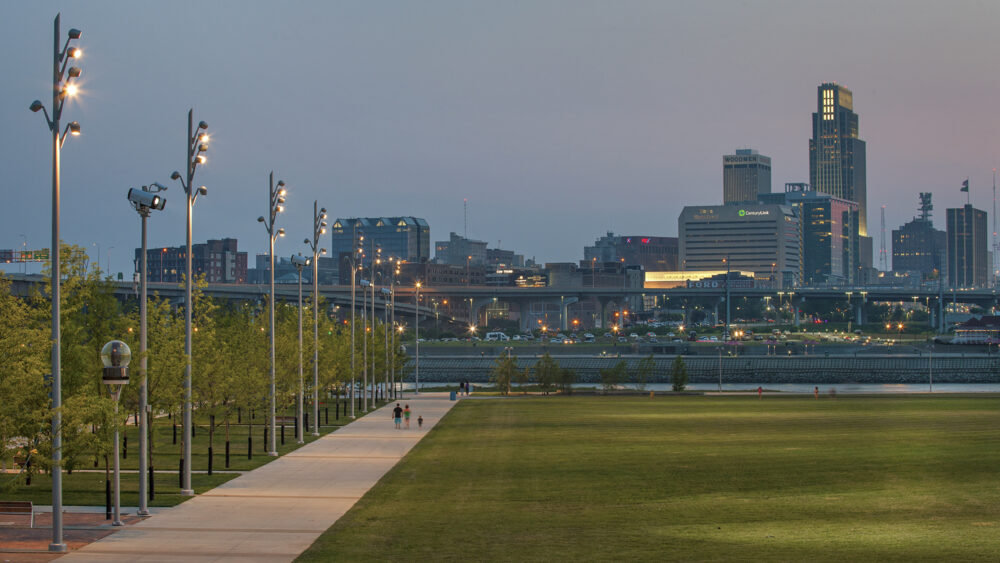
Tom Hanafan River’s Edge Park
Council Bluffs, IA
 Sasaki
Sasaki
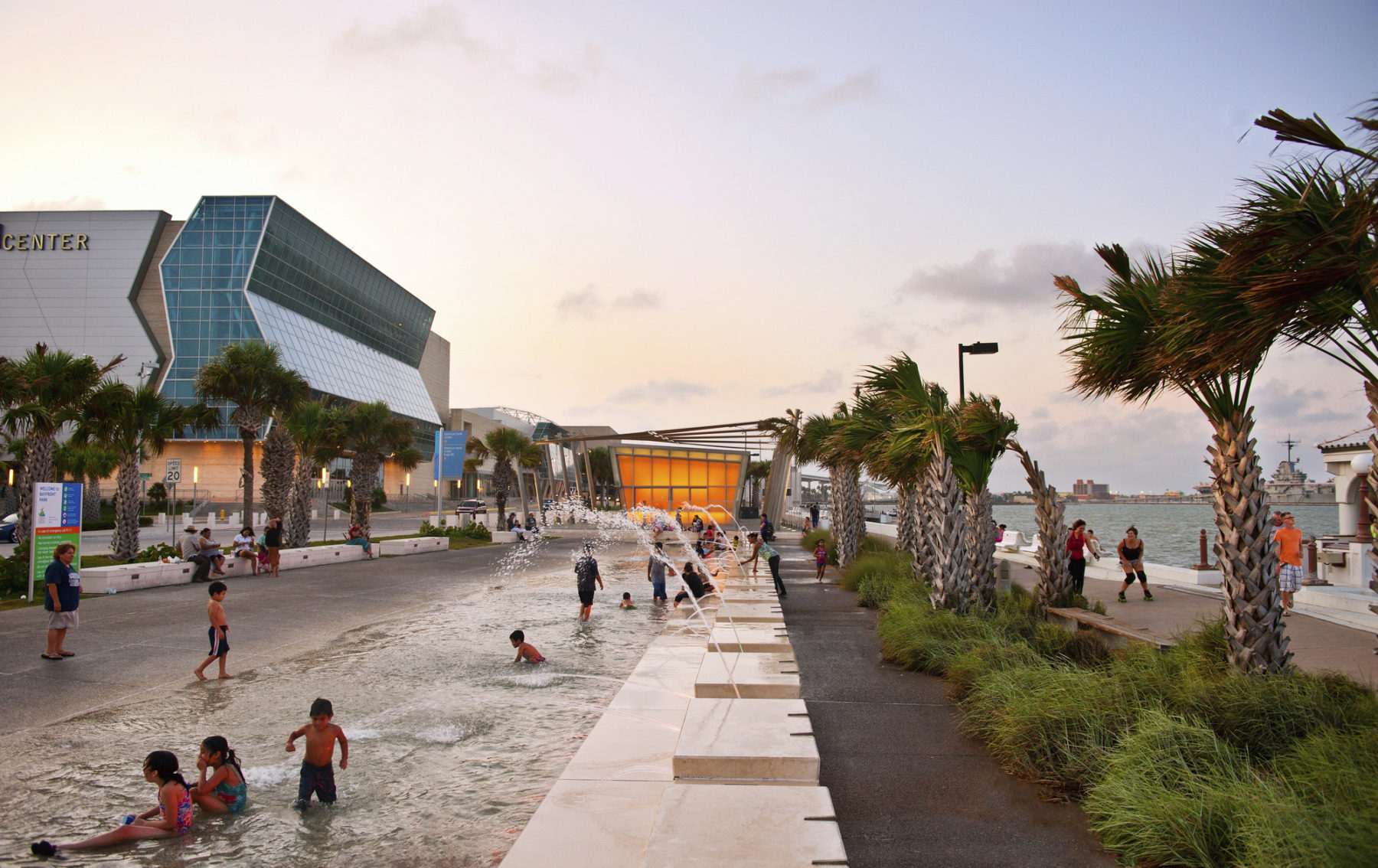
Following a devastating Category Four hurricane in 1919 that destroyed its downtown, Corpus Christi filled a block into the Corpus Christi Bay to construct a seawall that would protect the community from future disasters. Since that time, the bayfront has been defined by Shoreline Drive—a wide boulevard designed primarily for automobiles—and provided limited spaces for pedestrians in the hot South Texas sun.
In 2004, Gignac Associates and Sasaki prepared the overall master plan for the Corpus Christi bayfront—spanning from McGee Beach in the south to the ship channel in the north. The approved master plan called for the relocation of Shoreline Boulevard in order to accommodate green spaces along the water’s edge, thus creating the vision for the North Bayfront Park. Situated next to the American Bank Center Arena, North Bayfront Park is the first of a series of parks to be constructed from the master plan.
The relocation, reduction of two travel lanes, and removal of the 80-foot-wide median of Shoreline Boulevard recaptured the bayfront land and allowed for the creation of North Bayfront Park. Traffic trables, intersection neckdowns, and reduced lanes curtail traffic and improve the public realm for pedestrians. North Bayfront Park is designed to accommodate festivals and events such as Buccaneer Days. Shoreline Boulevard is closed to traffic for these events to make space for performances, vendors, and pedestrians.
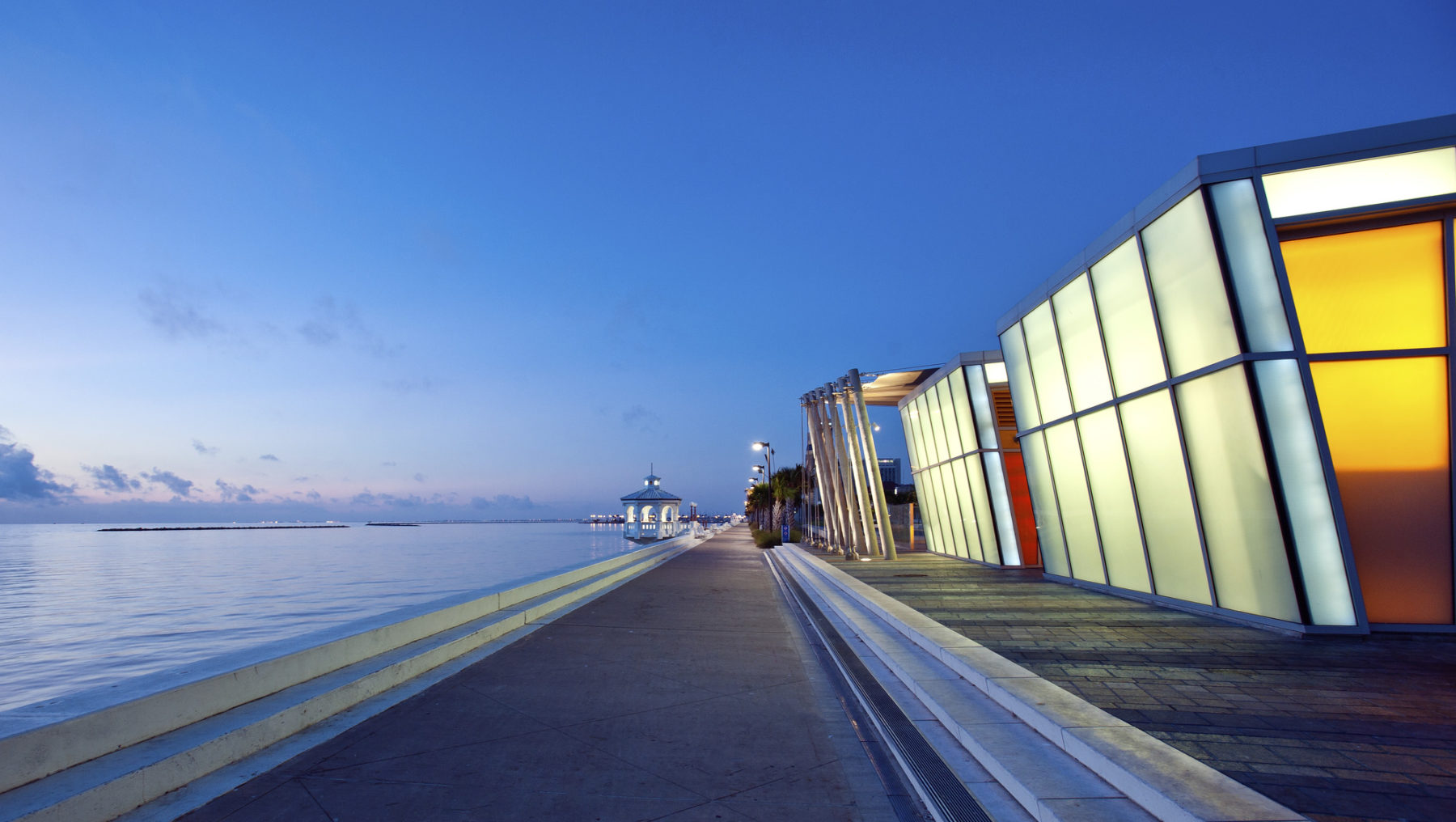
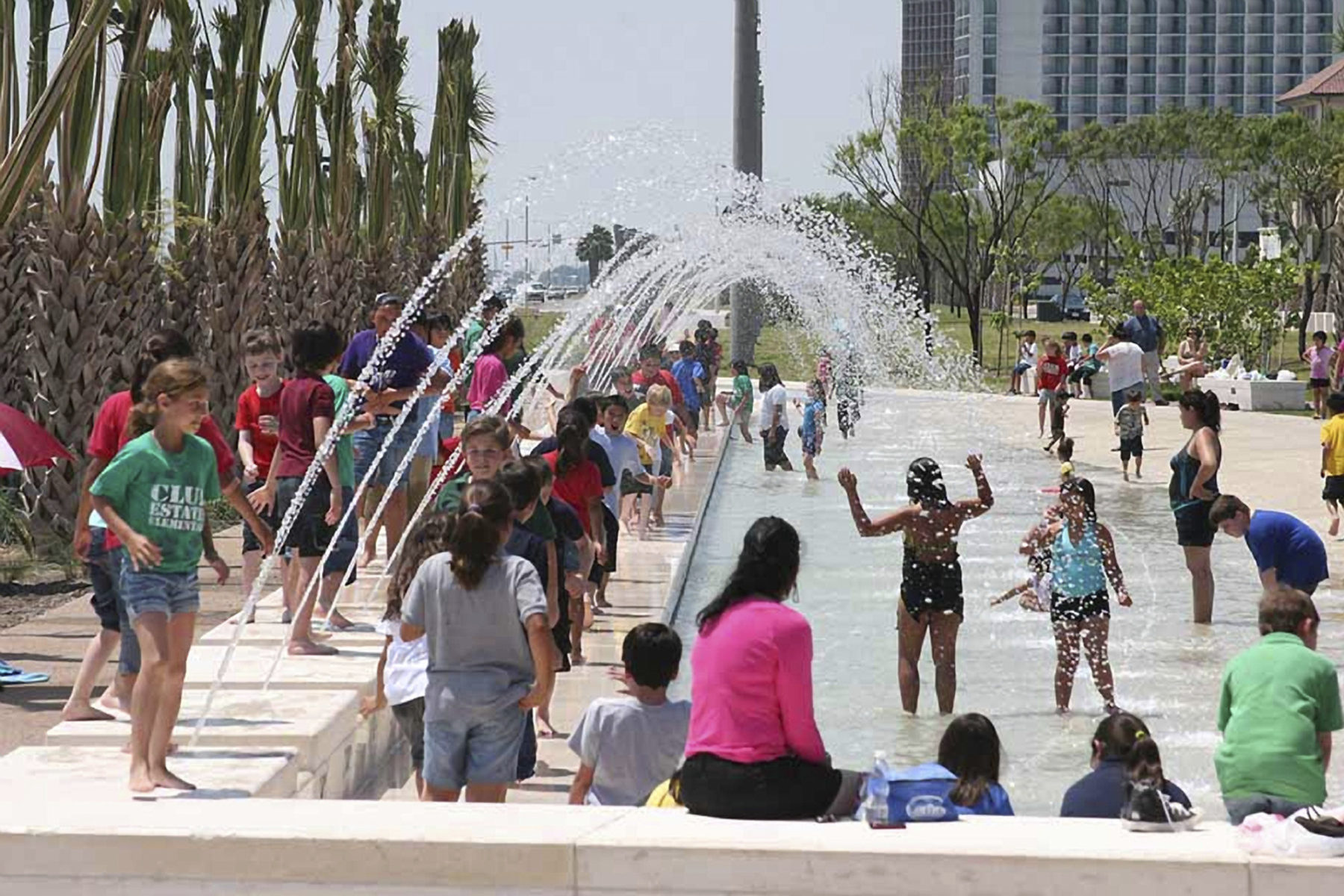
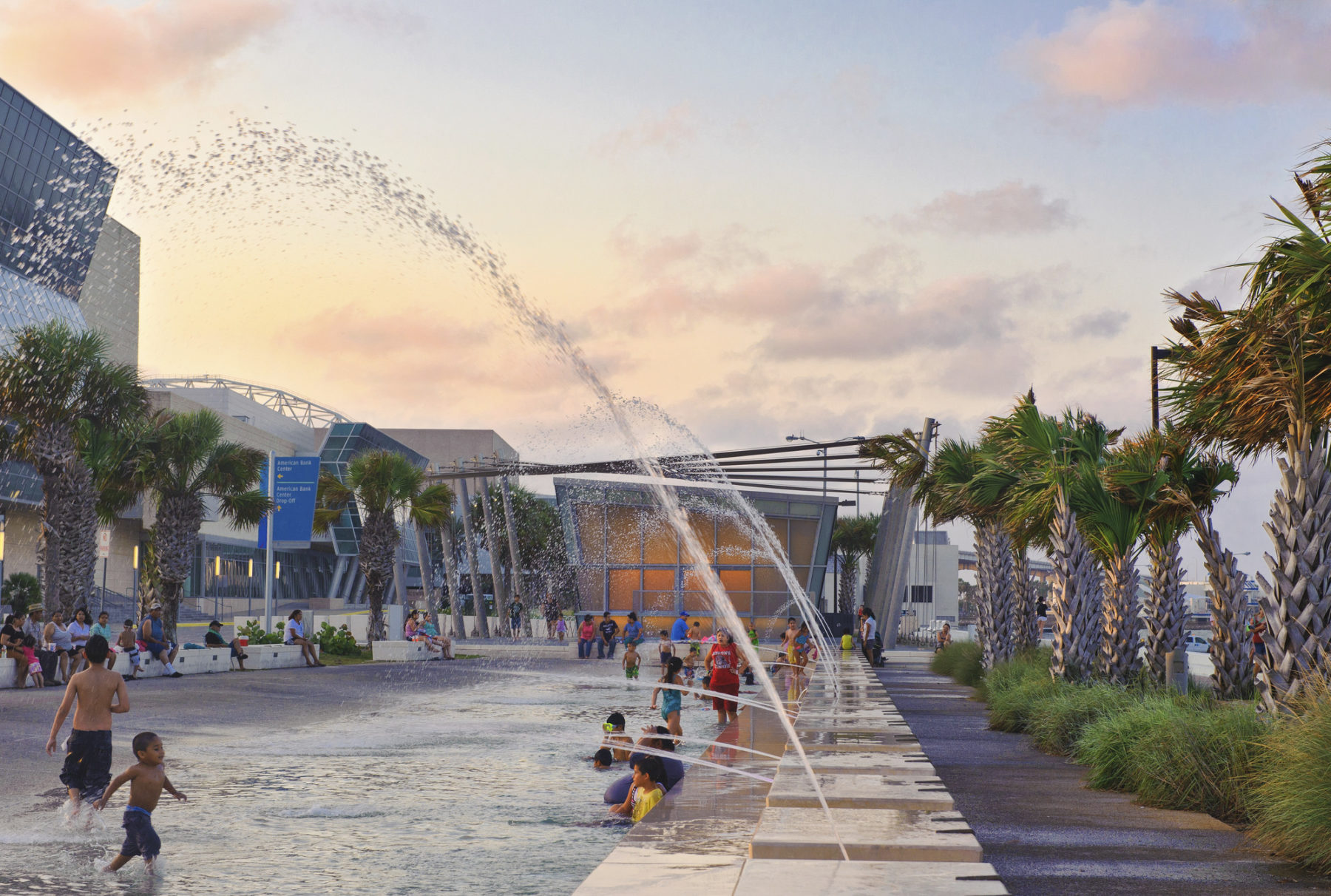
A key feature of the park includes an interactive fountain to attract children and families. Parents can sit at the adjacent café in the park, protected from the wind with glass windscreens, while watching their children play in the fountain. The café is shaded by fabric stretched between posts while groves of palms and mesquite trees will grow over time to provide shady spots in the park. An arbor is designed to support colorful Bougainvillea planting that shade a walkway leading to the fountain. The arbor fronts a parcel identified for a future restaurant included in the design to activate and program the park.
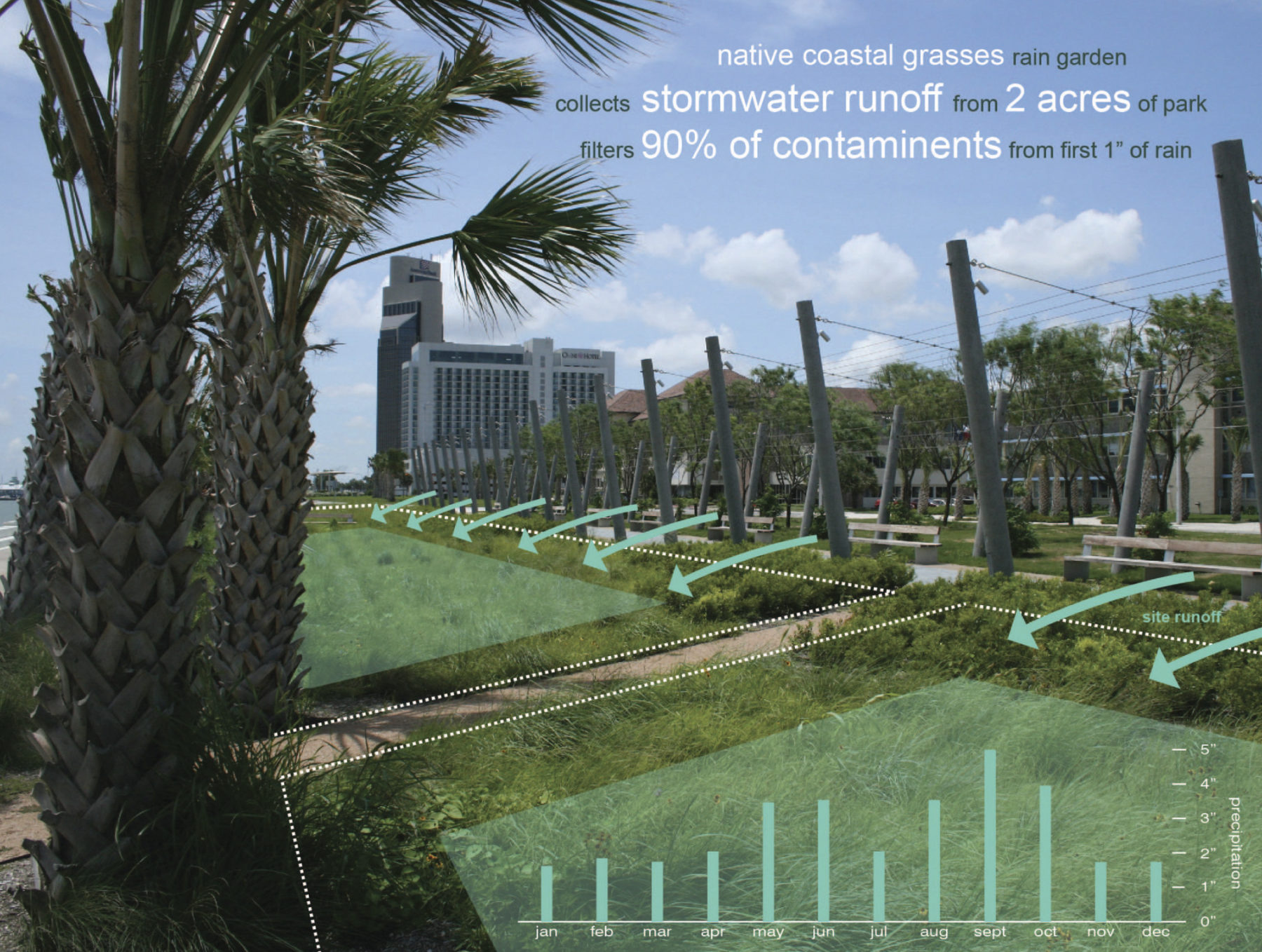
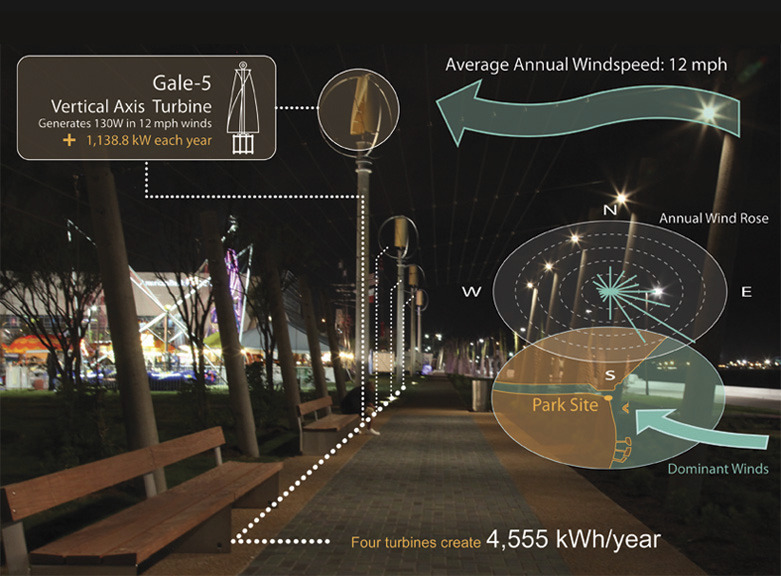
The park includes 35-foot-tall wind turbines along the waterfront that are designed to produce energy that goes back into the grid. The wind turbines are also a form of kinetic art, with sculptural qualities derived from the shape and colors of conch shells that expresses the city’s distinctive setting on the bay. The turbines will serve as iconic landmarks on the waterfront as well as providing renewable energy to the park. The introduction of wind power production also makes a cultural and historical connection by harnessing potentially harmful winds.
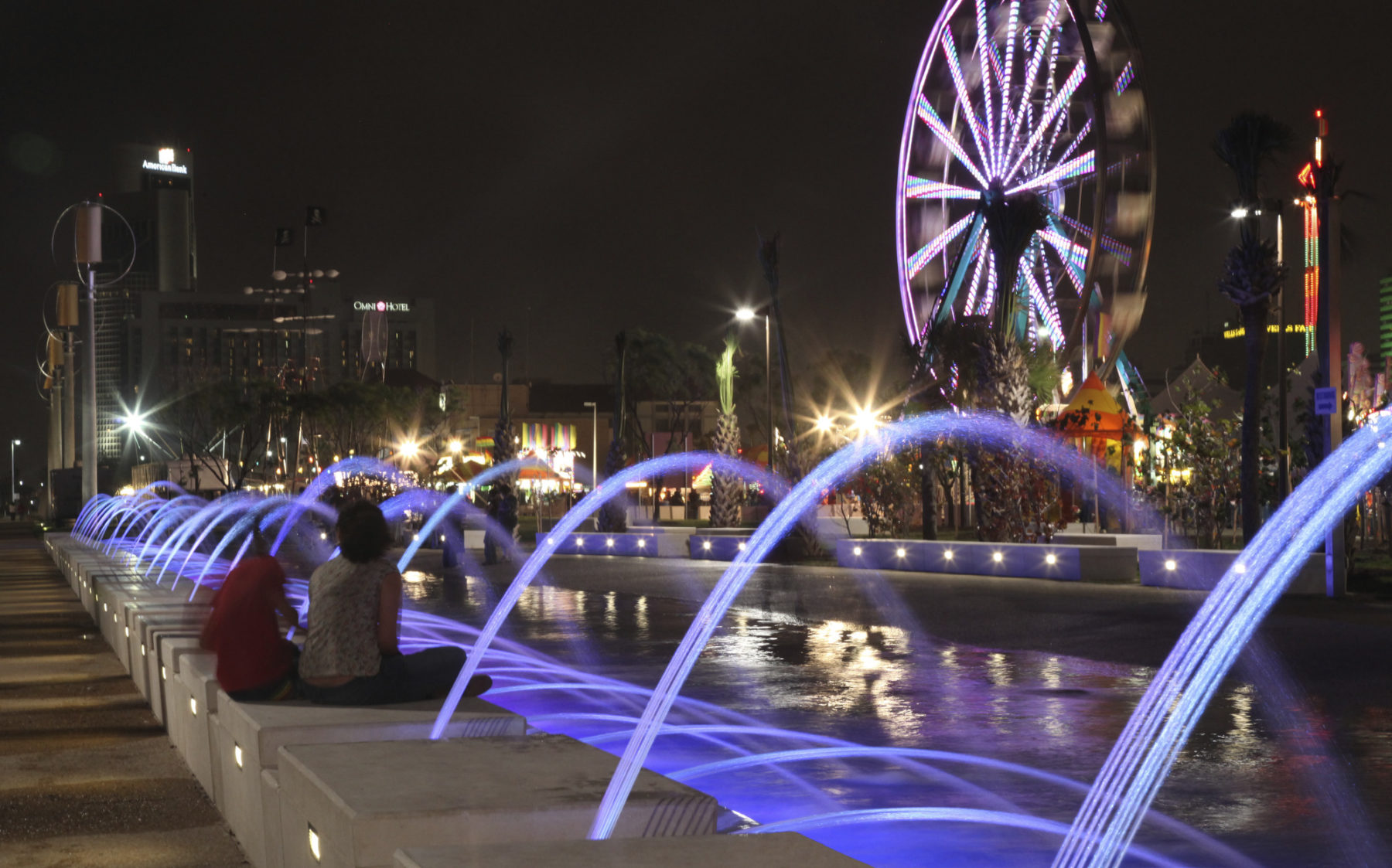
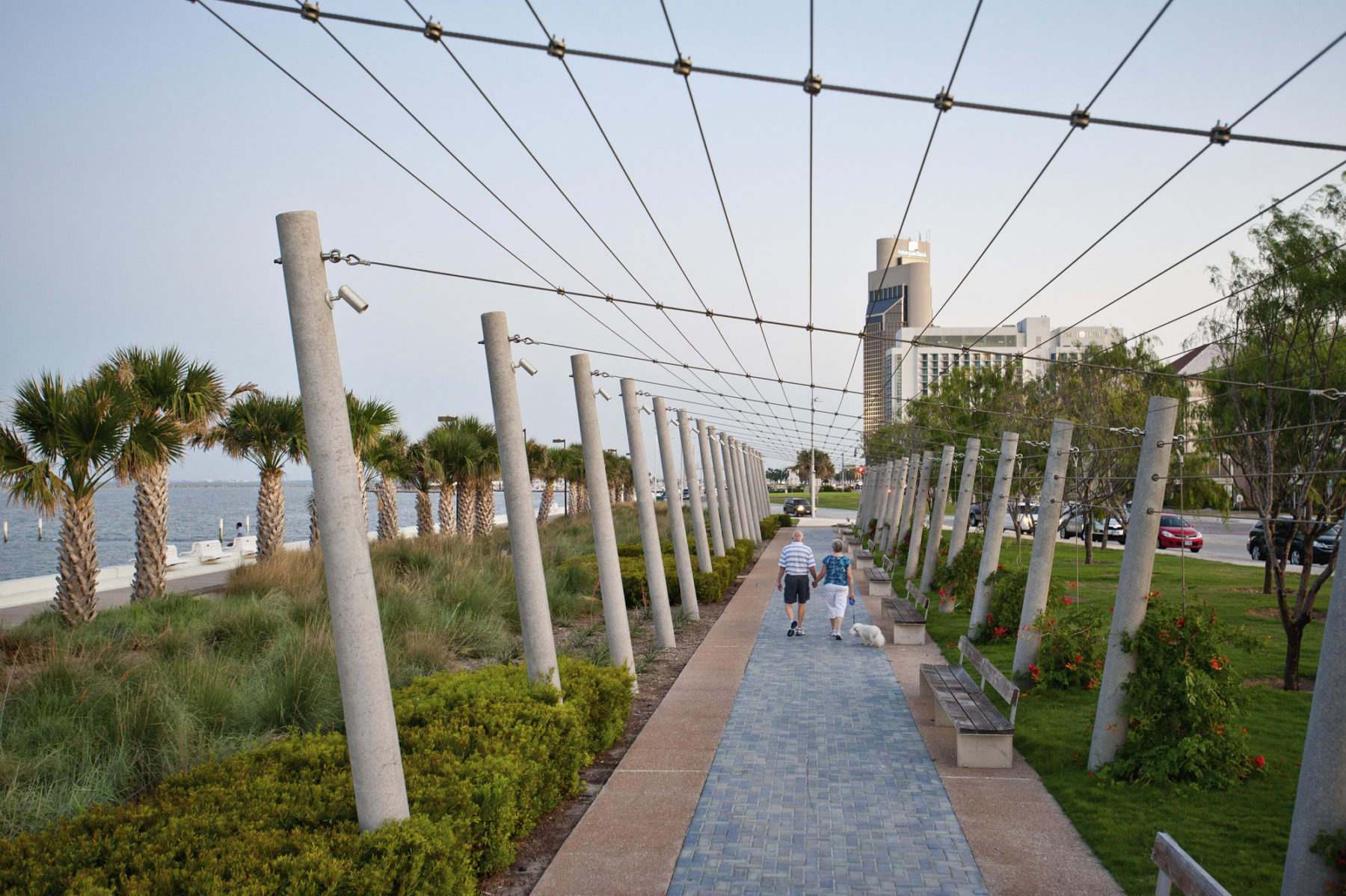
The park is sited atop the fill material behind the seawall constructed after the hurricane. Rainwater from the site is directed to a linear rain garden planted with native coastal meadow plants that filter stormwater contaminants and allows water to infiltrate into the ground. The coastal meadow serves as a reminder to visitors of the coastal landscape prior to the sea wall construction and offers environmental education of the native landscape ecology of the bay.
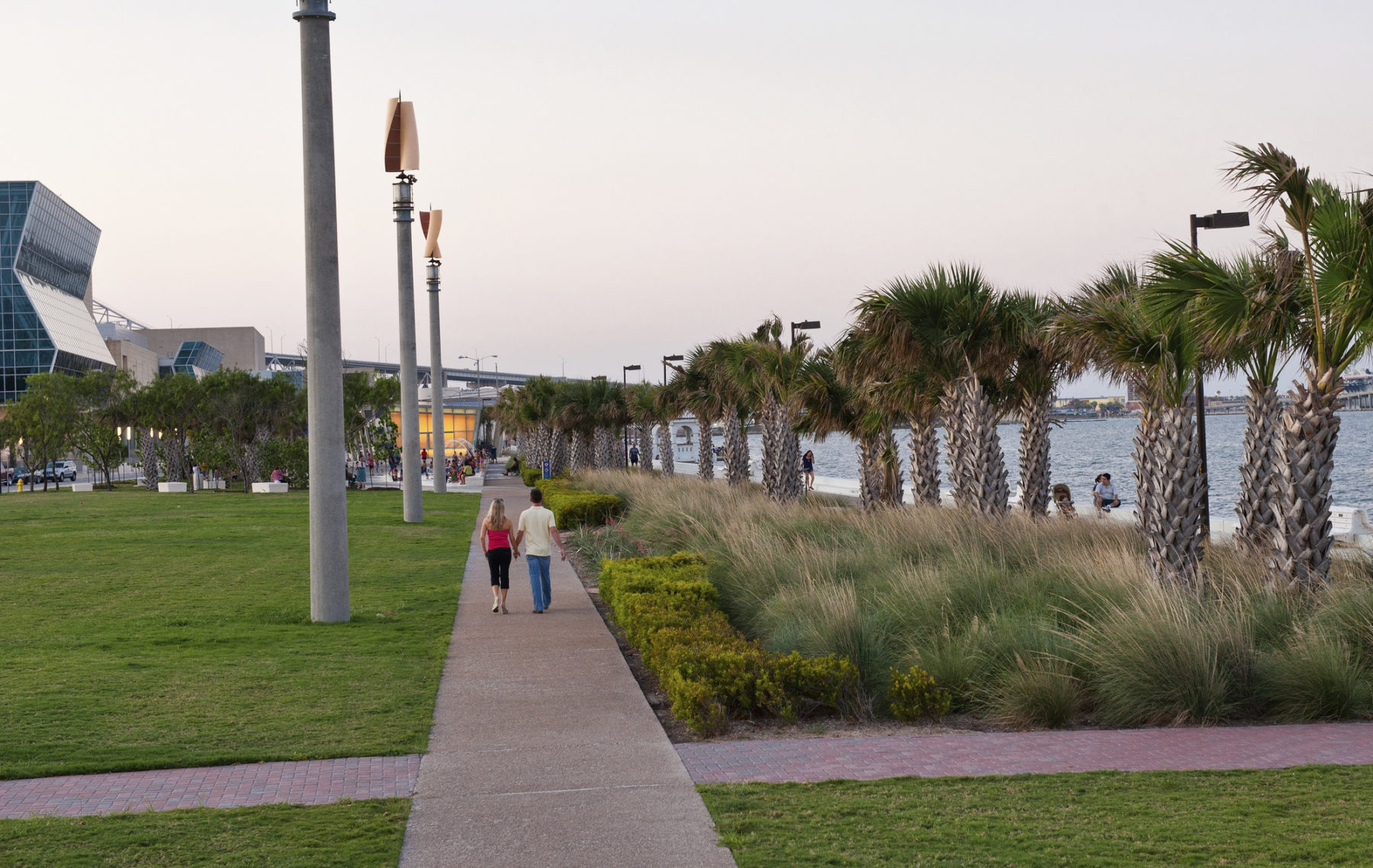
For more information contact Alan Ward.